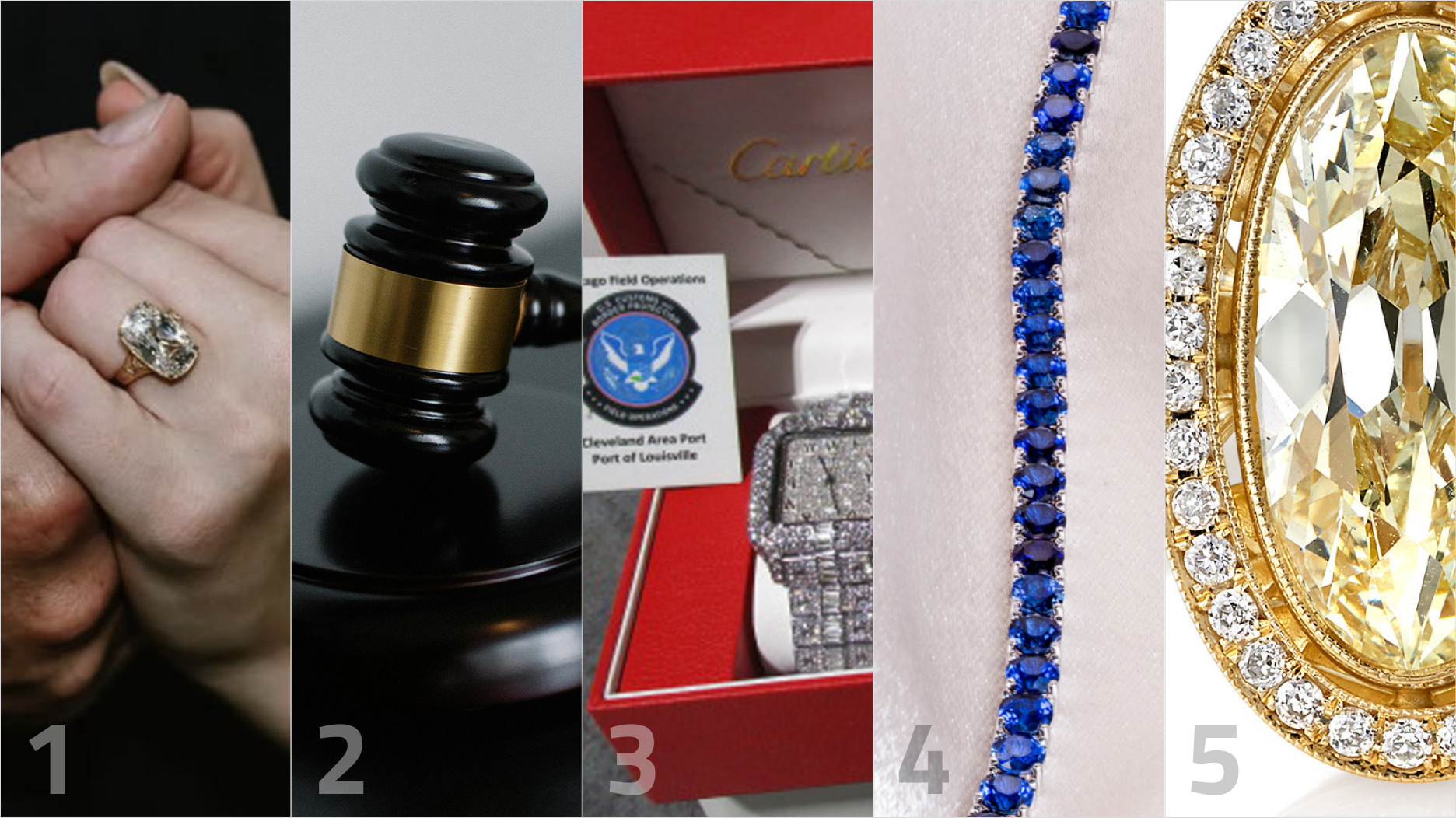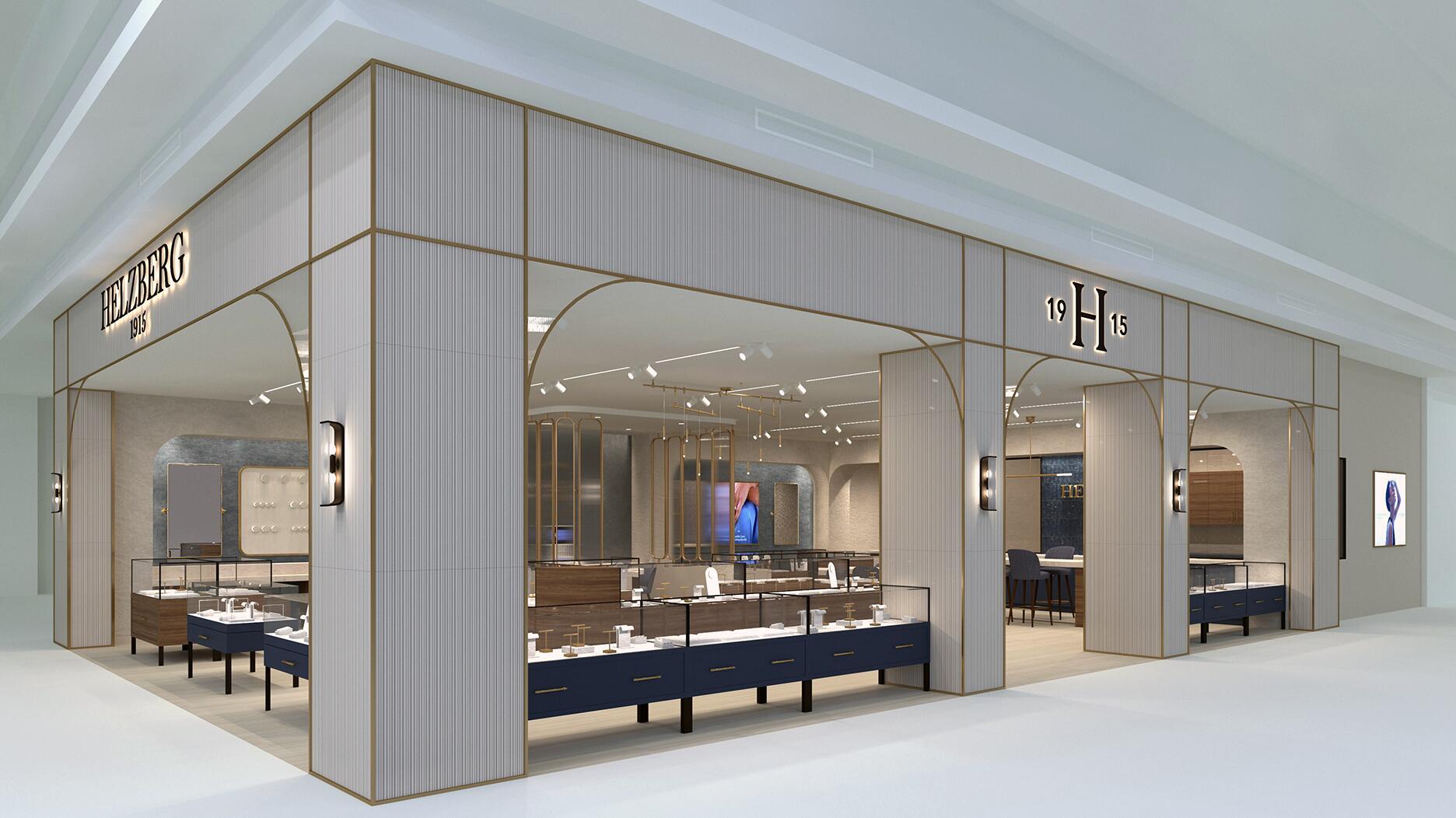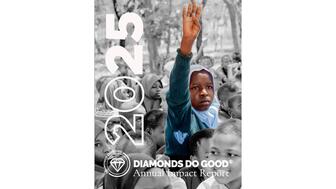The annual report highlights how it supported communities in areas where natural diamonds are mined, crafted, and sold.
Why the GIA Grades Lab-Grown Diamonds Like It Does
The GIA’s Tom Moses explains the reasoning behind the more general color and clarity grades the lab assigns to synthetic stones.

In both articles, I noticed the GIA using the following terminology to refer to the stones’ color and clarity: “J-equivalent color” and “VS2-equivalent clarity” for the white diamond, and color equivalent to “fancy deep blue” for the colored stone.
This terminology, for me at least, raised questions about the GIA’s approach to grading synthetic diamonds.
On Wednesday, the very knowledgeable Tom Moses, the GIA’s executive vice president and chief laboratory and research officer, took some time to explain it to me.
Moses said the GIA has been issuing Synthetic Diamond Grading Reports for about 10 years.
On these reports, the GIA does not give specific color or clarity grades.
Instead, Moses said, it grades lab-grown diamonds in broader terms, calling, for example, stones in the D-E-F range “colorless” and those in the G-H-I range “near colorless.”
For clarity, the lab uses only VVS, VS, SI or I for synthetic diamonds.
Why?
Because, “by their very nature, when they grow these diamonds, they are traditionally nitrogen poor,” Moses said, which is, incidentally, also what makes them Type IIa. In addition, many, though not all, CVD-grown diamonds come out a sort of brown color and then are de-colorized through a treatment process to make them colorless or near colorless.
All this is to say that these stones are not going to have the same range of color (D to Z) as mined diamonds, which is why the GIA chooses to use broader categories in grading them. They are grown to be as clear as possible, too, which is why the GIA also uses broader terms for clarity.
The GIA’s grading system, which was created long before the proliferation of lab-grown stones that we see today, was “developed for normal mine run, which doesn’t change. That’s nature,” Moses noted.
However, when the GIA publishes research articles online--like this one on the 5.19-carat diamond that appeared earlier this month--it uses terms such as “J-equivalent color” and “VS-equivalent clarity” to give readers a clearer picture of the stone.
Moses said despite what some people seem to think, the GIA is not doing this to “punish diamond growers.” Rather, the lab just sees it as the most logical way to describe lab-grown diamonds.
He added that from a consumer perspective, he doesn’t think there is that much demand for specific color grades for lab-grown diamonds. Rather, they’re just happy to have a ring or a pair of earrings that are real diamonds but for a lower price.
“They’re going to say, ‘It looks nice. They sparkle. They’re the price I want to spend. I’ll take them.’”
(I think this same argument could be made for mined diamonds as well, but that’s another topic for another time.)
Moses said while lab-grown diamond companies do ask the GIA to do it differently, he doesn’t see the GIA altering its system in the near future, especially with the improving diamond-growing technology producing more stones of high color and clarity.
“Our mission is to serve the consumer and provide clear and accurate information,” he said. “Although we listen to the industry, ultimately, we are here to serve the public.”
“Right now, I just don’t see a reason why we would make that change.”
The Latest

Footage of a fight breaking out in the NYC Diamond District was viewed millions of times on Instagram and Facebook.

The supplier has a curated list of must-have tools for jewelers doing in-house custom work this year.

How Jewelers of America’s 20 Under 40 are leading to ensure a brighter future for the jewelry industry.

The Signet Jewelers-owned store, which turned 100 last year, calls its new concept stores “The Edit.”


Linda Coutu is rejoining the precious metals provider as its director of sales.

The governing board welcomed two new members, Claire Scragg and Susan Eisen.

Roseco’s 704-page catalog showcases new lab-grown diamonds, findings, tools & more—available in print or interactive digital editions.

Sparkle with festive diamond jewelry as we celebrate the beginning of 2026.

The master jeweler, Olympian, former senator, and Korean War veteran founded the brand Nighthorse Jewelry.

In its annual report, Pinterest noted an increase in searches for brooches, heirloom jewelry, and ‘80s luxury.

Executive Chairman Richard Baker will take over the role as rumors swirl that a bankruptcy filing is imminent for the troubled retailer.

Mohr had just retired in June after more than two decades as Couture’s retailer liaison.

Shekhar Shah of Real Gems Inc. will serve as president of the Indian Diamond & Colorstone Association in 2026.

This year’s good luck charm features the mythical horse Pegasus, and is our first Piece of the Week of the new year.

As part of the leadership transition, Sherry Smith will take on the role of vice president of coaching strategy and development.

It marks the third time the country has headed the Kimberley Process. Ghana will serve as vice chair.

The new Bulova x Stetson designs highlight two animals often associated with the American West—the bison and the Texas Longhorn.

Its residency at Yamron Jewelers will run through May 2026.

From influential executives to innovative designers, we pay tribute to the people we said goodbye to this year.

The retailer is expanding into areas with large Indian and South Asian populations.

The Italian brand has opened its first flagship amid the peaks of the Dolomites in Madonna di Campiglio, Italy.

The new curation at the Natural History Museum of Los Angeles County showcases rare gem and mineral specimens in their uncut, natural state.

The couple pleaded guilty to concealing at least $127 million in cash transactions at its precious metals businesses.

Consumers shared concerns about prices, inflation, tariffs, trade, and politics in the survey’s write-in response section.

In February 2026, the auction house will move its headquarters to the former Steinway Hall, a neoclassical landmark on Billionaires’ Row.

The new show will take place Jan. 23-25, 2026.


























